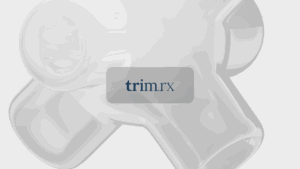Is Tuna Healthy for Weight Loss? Exploring the Nutritional Benefits and Culinary Versatility

Introduction
Did you know that incorporating tuna into your diet could support your weight loss journey? This popular seafood is not only a culinary favorite but also a nutritional powerhouse. From its high protein content to its rich sources of essential vitamins and minerals, tuna has earned its place in many healthy eating plans. As we explore the question, “Is tuna healthy for weight loss?” we will delve into the nutritional benefits, potential risks, and creative ways to enjoy this versatile fish.
In recent years, there has been a growing interest in the role of specific foods in weight management. As more individuals seek sustainable and effective ways to shed pounds, understanding the nutritional profiles of common foods like tuna is crucial. The purpose of this blog post is to provide you with a comprehensive overview of tuna’s health benefits, potential drawbacks, and how it can fit into a balanced diet geared towards weight loss.
We will cover various aspects, including the different types of tuna available, their nutritional content, the benefits of including them in your diet, and some delicious recipes to keep your meals exciting. By the end of this post, we hope you will have a clearer understanding of how tuna can contribute to your weight management efforts and overall health.
So, let’s dive into the depths of this oceanic delight and discover what makes tuna a great option for those on a weight loss journey!
Understanding Tuna: Types and Nutritional Content
Tuna belongs to a group of saltwater fish that includes several species, such as skipjack, yellowfin, and albacore. Each type of tuna comes with its unique flavor profile and nutritional benefits, making it a versatile choice for various culinary applications.
Types of Tuna
-
Skipjack Tuna: Often found in canned products, skipjack tuna is the most commonly consumed variety worldwide. It is characterized by its rich flavor and slightly darker flesh.
-
Albacore Tuna: Known as “white tuna,” albacore has a milder taste and a firmer texture. It is often available in canned form and is more expensive than skipjack.
-
Yellowfin Tuna: This species is popular for grilling and searing due to its firm, meaty texture. Yellowfin tuna is often used in sushi and sashimi dishes.
-
Bluefin Tuna: Considered a delicacy, bluefin is prized for its rich flavor and high-fat content, but it is also the most endangered species. As a result, it is less commonly available.
Nutritional Profile of Tuna
Let’s take a closer look at the nutritional content of tuna, focusing on a 100-gram serving of canned tuna in water:
- Calories: Approximately 109 kcal
- Protein: 24.9 grams
- Fat: 1 gram
- Omega-3 Fatty Acids: Varies by type but generally beneficial for heart health
- Selenium: 69 mcg (important for antioxidant defense)
- Vitamin D: A good source, crucial for bone health and immune function
Tuna is not only low in calories but also high in protein, making it an excellent food choice for weight loss. The protein content helps promote satiety, reducing the likelihood of overeating.
Summary of Nutritional Benefits
- High in Protein: Supports muscle growth and repair, keeps you feeling full.
- Low in Fat and Calories: Makes it easy to incorporate into a calorie-controlled diet.
- Rich in Vitamins and Minerals: Provides essential nutrients like selenium and vitamin D.
Health Benefits of Tuna for Weight Loss
Tuna’s nutritional profile offers several health benefits that can aid in weight management. Here are some key points to consider:
1. Supports Muscle Maintenance
Protein is essential for maintaining muscle mass, especially when losing weight. Tuna is a complete protein source, meaning it contains all nine essential amino acids necessary for muscle repair and growth. Including tuna in your meals can help preserve muscle while promoting fat loss, which is vital for achieving a toned physique.
2. Promotes Satiety
One of the challenges of weight loss is managing hunger. The high protein content in tuna helps to promote feelings of fullness, which can reduce overall calorie intake. Studies have shown that high-protein diets can lead to decreased appetite and increased satiety, making it easier to stick to your dietary goals.
3. Provides Essential Nutrients
Incorporating tuna into your diet ensures you’re getting a wealth of essential vitamins and minerals. Tuna is particularly high in vitamin D, which supports bone health and immune function. It also contains selenium, an antioxidant that helps protect your cells from damage.
4. Easy to Prepare and Versatile
Tuna can be prepared in various ways, making it a convenient option for quick meals. Whether you enjoy it in a salad, sandwich, or sushi, there are countless recipes to keep your meals exciting and satisfying. This versatility can make it easier to stick to a healthy eating plan.
5. Supports Metabolism
The omega-3 fatty acids found in tuna have been linked to improved metabolic health. These healthy fats can help regulate insulin sensitivity and promote fat oxidation, which may support weight loss efforts.
Summary of Health Benefits
- Supports muscle maintenance and fat loss.
- Promotes satiety, reducing calorie intake.
- Provides essential vitamins and minerals.
- Versatile and easy to prepare.
- May support metabolic health.
Potential Risks of Eating Tuna
While tuna has many health benefits, it is essential to be aware of some potential risks associated with its consumption:
1. Mercury Content
Tuna, particularly larger species like bluefin and albacore, can accumulate mercury in their tissues. High mercury levels can pose health risks, especially for pregnant women and young children. It is advisable to limit consumption to two or three servings per week and choose lower-mercury options like skipjack tuna.
2. Sodium Levels in Canned Tuna
Canned tuna can be high in sodium, which may contribute to high blood pressure if consumed in excess. Opting for tuna packed in water rather than brine or oil can help reduce sodium intake.
3. Allergies
Some individuals may have allergies to fish, including tuna. If you have a known fish allergy, it is essential to avoid tuna and seek alternatives.
Summary of Potential Risks
- Mercury contamination in larger species.
- High sodium levels in canned varieties.
- Possible fish allergies.
Creative Ways to Enjoy Tuna
To help you incorporate tuna into your diet, we’ve compiled a list of delicious and healthy recipes that are easy to prepare and satisfying.
1. Tuna Salad with Greek Yogurt
Swap traditional mayonnaise for Greek yogurt to create a creamy, high-protein tuna salad. Mix canned tuna with Greek yogurt, diced celery, red onion, and a squeeze of lemon juice for a refreshing meal.
2. Tuna and Avocado Toast
For a quick breakfast or snack, mash avocado on whole-grain toast and top it with canned tuna. This dish provides healthy fats, fiber, and protein to keep you full longer.
3. Tuna Stuffed Bell Peppers
Cut bell peppers in half and fill them with a mixture of canned tuna, quinoa, diced tomatoes, and spices. Bake until the peppers are tender for a nutritious and colorful meal.
4. Tuna Poke Bowl
Create a deconstructed sushi bowl by combining cooked brown rice or cauliflower rice with canned tuna, sliced cucumbers, avocado, and a drizzle of soy sauce. Top with sesame seeds for added flavor.
5. Tuna Veggie Wrap
Spread hummus on a whole-grain wrap, add canned tuna, shredded carrots, spinach, and sliced bell peppers. Roll it up for a portable and nutritious lunch option.
Conclusion
In conclusion, tuna is not only a delicious addition to your diet but also a highly nutritious food that can support weight loss efforts. Its high protein content, low calories, and essential vitamins make it an ideal choice for those seeking to maintain a healthy weight. However, it is crucial to be mindful of its potential risks, particularly regarding mercury levels and sodium content.
As you incorporate tuna into your meals, remember to balance it with a variety of other healthy foods to ensure you meet all your nutritional needs. By making informed choices and enjoying tuna in moderation, you can take advantage of its benefits while minimizing any risks.
Together, we can navigate the journey to sustainable weight loss and healthier living—one meal at a time.
FAQ
Is tuna healthy for weight loss?
Yes, tuna is a low-calorie, high-protein food that can support weight loss by promoting satiety and maintaining muscle mass.
How often should I eat tuna?
It is generally recommended to limit tuna consumption to two or three servings per week, especially for pregnant women and young children, due to mercury content.
What is the best way to prepare tuna for weight loss?
Opt for canned tuna in water or fresh tuna grilled or baked without added fats. Pair it with vegetables or whole grains for a balanced meal.
Are there different types of tuna, and do they have different nutritional values?
Yes, there are several types of tuna, including skipjack, albacore, and yellowfin. While they are generally similar in nutritional value, some may have higher fat content, so check the labels for specifics.
Can I eat tuna if I have a fish allergy?
If you have a known allergy to fish, it is best to avoid tuna and seek alternative sources of protein. Always consult your healthcare provider for personalized advice.
By understanding the nutritional benefits and potential risks of tuna, we can make informed choices that align with our health goals. Now, are you ready to add this nutritious fish to your meal plan?
Keep reading
Does Walking After Eating Help with Weight Loss?
Discover how walking after eating helps with weight loss! Learn its benefits for digestion and blood sugar control. Start your journey today!
How Much Dalia to Eat for Weight Loss: A Comprehensive Guide
Discover how much dalia to eat for weight loss and unlock its health benefits. Explore serving sizes and tasty recipes to aid your journey!
Can We Eat Dark Chocolate in Weight Loss? Exploring the Facts
Wondering can we eat dark chocolate in weight loss? Discover how to enjoy this treat while staying on track with your diet. Learn more now!
Can I Eat Bread for Weight Loss? Debunking the Myths and Exploring the Benefits
Wondering if you can eat bread for weight loss? Discover how to incorporate healthy bread into your diet while achieving your weight loss goals!
Can I Eat Idli for Weight Loss?
Wondering if you can eat idli for weight loss? Discover its benefits, nutritional profile, and perfect pairings for a healthy diet!
Can I Eat Peanut Butter During Weight Loss? Exploring the Benefits and Best Practices
Wondering, ‘can I eat peanut butter during weight loss?’ Discover how to enjoy this creamy treat while reaching your goals. Learn more!
Does Eating Fruit Help with Weight Loss? Exploring the Sweet Science
Discover how eating fruit helps with weight loss. Learn the benefits, top fruits, and tips to boost your health journey today!
Is Not Eating Breakfast Good for Weight Loss?
Wondering if not eating breakfast is good for weight loss? Discover the latest research and tips for a healthier approach to your diet!
How to Eat Chana for Weight Loss: A Comprehensive Guide
Discover how to eat chana for weight loss with practical tips, delicious recipes, and nutritional insights. Start your journey to better health today!





